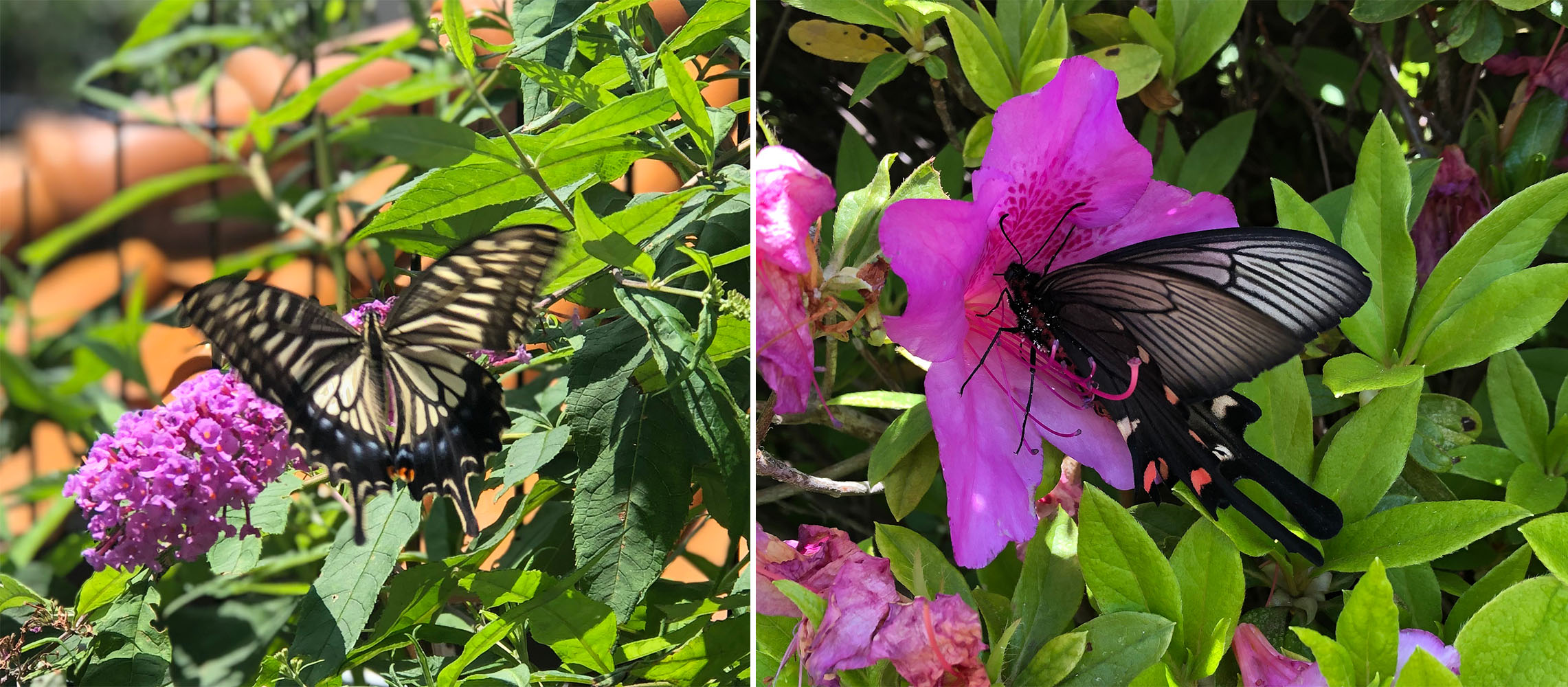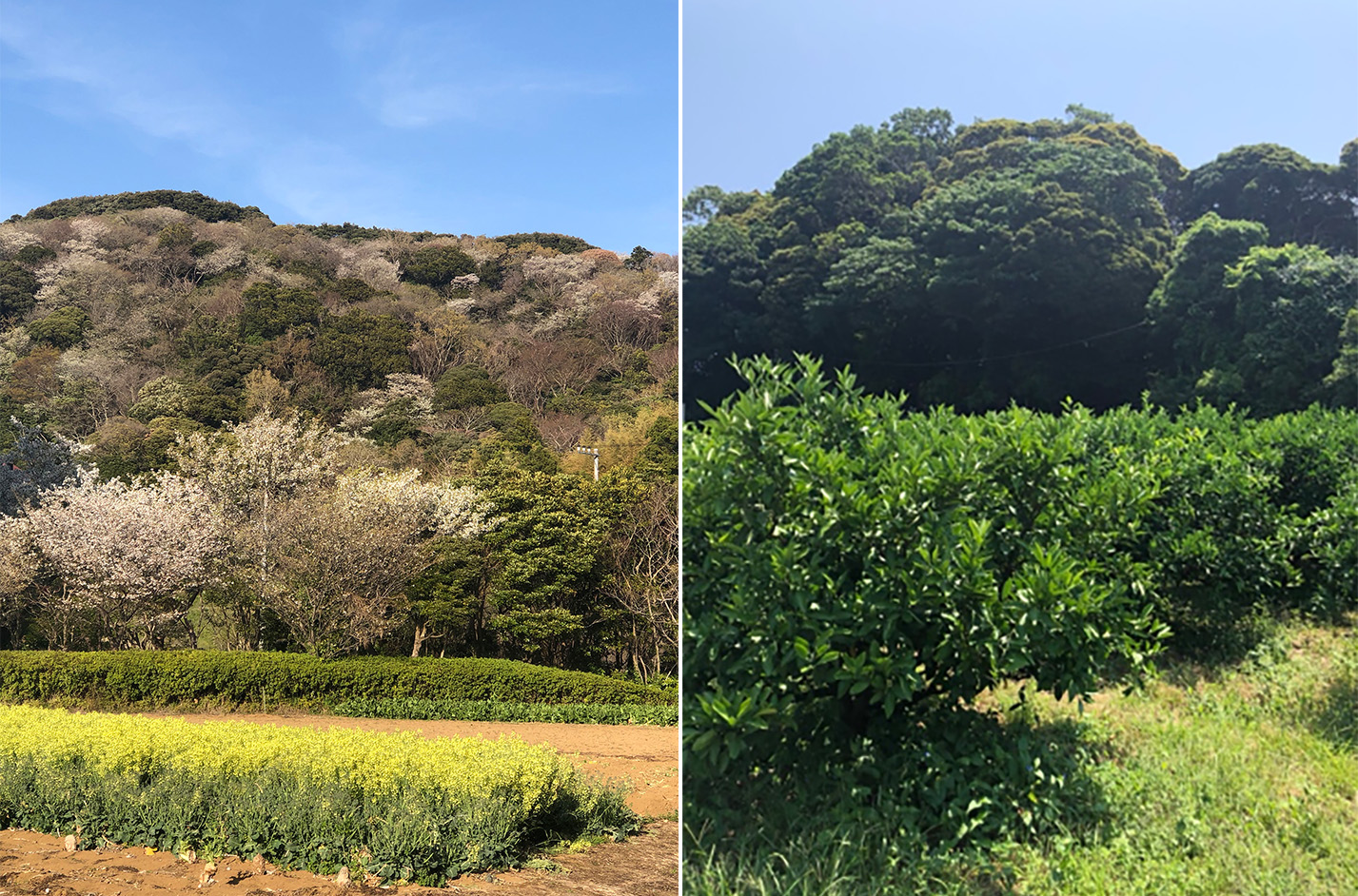Miura Peninsula Collaborative Project
Past and ongoing Miura Peninsula Collaborative Projects
-
Ancient DNA reveals the transition of the dogs in the Miura Peninsula
Skull of a dog excavated in Miura Peninsula (Left) and Dog tooth(Right)
Dogs were brought to the Japanese archipelago during the Jomon Period, and the oldest dog bones in Japan were excavated from the Miura Peninsula (Natsushima Shell Mound: Yokosuka City). Since then, dogs have continued to build relationships with humans and live on the Miura Peninsula. For this reason, dog bones, teeth, and other remains have been excavated from sites on the Miura Peninsula. What kind of dogs were the dogs of the Miura Peninsula in the past? This study aims to clarify the answer to this question by using ancient DNA technology.
Recent technological developments have made it possible to extract DNA (ancient DNA) from bones and teeth excavated from archaeological sites and decode their genomic information. Ancient DNA research requires a specific facility; only a few such facilities exist in Japan. We have an ancient DNA facility at the Hayama campus and can extract DNA from bones excavated from archaeological sites. This study uses this method to investigate how the dogs of the Miura Peninsula have transitioned over the years. (Yohey Terai) -
Survival Strategies of Aquatic Organisms in Miura PeninsulaWe can see many living organisms when we go to the sea in the Miura Peninsula. How do these organisms live, leave offspring, and survive in the environment of the Miura Peninsula? We are trying to clarify this question using the sea slug and saltwater fish that migrate up rivers from the sea.

Sea slug
When you go to the shore when the tide is low, you can see brightly colored sea slugs. These sea slugs are known to protect their bodies with what they eat. However, we need to find out what most species of sea slugs what they eat. This study uses recently developed DNA analysis techniques to determine what sea slugs eat in their habitat. If they are also using what they are eating to protect their bodies, we would like to know the relationship between body defense and the evolution of body color.
Saltwater fish
Looking at the rivers of the Miura Peninsula, you will notice that many fish are in the rivers. We can often see large schools of mullet. Many fish species seen in the rivers are saltwater fish that migrate to freshwater areas. In the Tagoe River alone, at least seven saltwater fish live in freshwater. Why saltwater fish migrate up rivers and how they survive in freshwater environments is unknown. This study attempts to clarify these questions. (Yohey Terai)
-
History of development of culture technology for cabbage-eating sea urchins and its socio-economic cycle
Exploring the history of culture technology development and socio-economic circulation mechanisms for the cabbage-eating sea urchinThe purpose of this study is to advance the following three investigations to identify future research topics and to explore the possibility of making social contributions to the field from evolutionary scientific perspectives.
1) Investigation of the current situation surrounding the development of culture of cabbage-eating sea urchins: Kanagawa Prefectural Fisheries Technology Center, etc.
2) Research on the basic biology of the purple sea urchin: from micro to macro biology (examining gonads, cells, chromosomes, and rocky shore denudation mechanisms etc.)
3) Cabbage-eating sea urchin branding process, market distribution measures, and socio-economic initiatives, etc.I visited Dr. Kazushige Usui, Senior Researcher, Kanagawa Prefectural Fisheries Technology Center, and had a tour of the facility.

(Left) Cabbage-eating sea urchin tank at the Fisheries Technology Center (for display)
(Right) Cultivation of sea urchins at the "Sea Urchin Tower”
(Left) Dr. Usui's handmade collection of sea urchin shells
(Right) Lamp tower (prototype under construction)
According to Dr. Usui, "Each region has its own way of cultivating sea urchins, and cabbage-eating sea urchins are unique to the Miura Peninsula. Cultivation techniques are still developing, and there is an urgent need to preserve the local natural environment and tackle the global warming." He said. The lamps of sea urchin shells are truly works of art, and such effective use will no doubt play a part in the SDGs. Dr. Usui, thank you for your valuable talk. (Hideyuki Tanabe)
Palaeoenvironment and subsistence activities of humans in the Miura peninsula
Map of sites in Miura Peninsula (Takao Sato)
A number of archaeological research has been carried out in the Miura peninsula during the last 100 years. Research at shell middens contributed to reconstruct the changes in the sea level and prehistoric coastal environment during the Jomon period. Rice farming was adapted relatively early in the Yayoi period, and a large settlement was formed in Ikego, Zushi. Caves along the coast were used as the camp site to exploit seafood. These caves are important field for archaeological investigations and evidence of various human activities have been recovered, including human skeletons, animal bones as well as tools made of bone, antler, or shells. Local archaeologists and researchers affiliated to museums and universities cooperate in this project. (Hitomi Hongo)

(Left) Coastal cave sites in southern part of Miura Peninsula (Kohei Sugiyama)
(Right) View of Sagami Bay from Shiraishi Cave (Kohei Sugiyama)
Oracle bones (Yayoi Period) and sea turtle shells (Kofun Period) excavated from Maguchi Cave, which were used for divination (Takao Sato)

Buried horse skeleton belonging to the Middle Age, found at a site near Wakamiya Oji, Kamakura (Takao Sato)
Miura Peninsula in the 1950s: Tuna and Radiation
Kotoshiro Maru No. 7 (at the Misaki port in 1953) (image from the collection of Mr. Morita Kiichi)
Dainana Kotoshiro Maru, originally built in Misaki as a bonito fishing boat, was converted to a tuna boat and later renamed as the Daigo Fukuryu Maru at the Yaizu port in 1953.

Radioactivity inspection at the Misaki port (image from Mr. Morita’s collection)

“Certificate” issued by the Misaki public health center
It was put on fish bodies that had passed their test for radiation.
(From "Records of the Bikini Incident in Miura," Miura City 1996; p.35)In 1954, numerous fishing boats were contaminated by the fallout from the U.S. nuclear test "Bravo" at Bikini Atoll in the Marshall Islands. The Daigo Fukuryu Maru of Yaizu is the best known among the contaminated Japanese boats, but Misaki, which was a major base for tuna fishing, also suffered substantial damage. The community discarded more than 150 vessels and nearly 200 tons of tuna in 1954 (March to December), which was the largest scale of financial losses in Japan. On the other hand, the campaign for the peaceful uses of atomic energy swept the peninsula, and there was a plan to establish a national atomic energy research institute in Takeyama (Yokosuka) in 1956.
Currently I am collecting local records from the 1950s (written records, photographs, and posters etc.). (Kaori Iida)
Environmental adaptation of butterfly species in different habitats of Miura peninsula -Diversity of the visual and olfactory systems in butterfly species
Miura peninsula involves various ecosystems such as traditional farms, seashore, woods and so on. In each ecosystem we can find different swallowtail butterfly species. We are investigating variations in their sensory systems: vision and olfaction in aspects of behavioral ecology, neuroethology and molecular evolution to understand how the sensory system adapts to its habitat in each species. (Michiyo Kinoshita)

Satoyama landscapes of Miura Peninsula
Migration patterns and behavioral ecology of large pelagic fishes off the Miura Peninsula
Miura Peninsula seen from a set-net fishing boat (Yokosuka City)
In this project, with the cooperation of local fishermen and recreational boat operators, we are studying the behavioral ecology of large pelagic fish, especially sharks, off the Miura Peninsula. The Miura Peninsula juts out from Honshu into the Pacific Ocean and is close to the main current of the Kuroshio Current, which attracts a variety of large pelagic fish species. However, little is known about where they come from and where they go. Therefore, we are capturing shark species such as blue sharks, shortfin mako sharks, and scalloped hammerhead sharks, attaching satellite transmitters, and releasing them to investigate their migration patterns in relation to environmental factors (water temperature, ocean currents, etc.). (Yuuki Watanabe)








